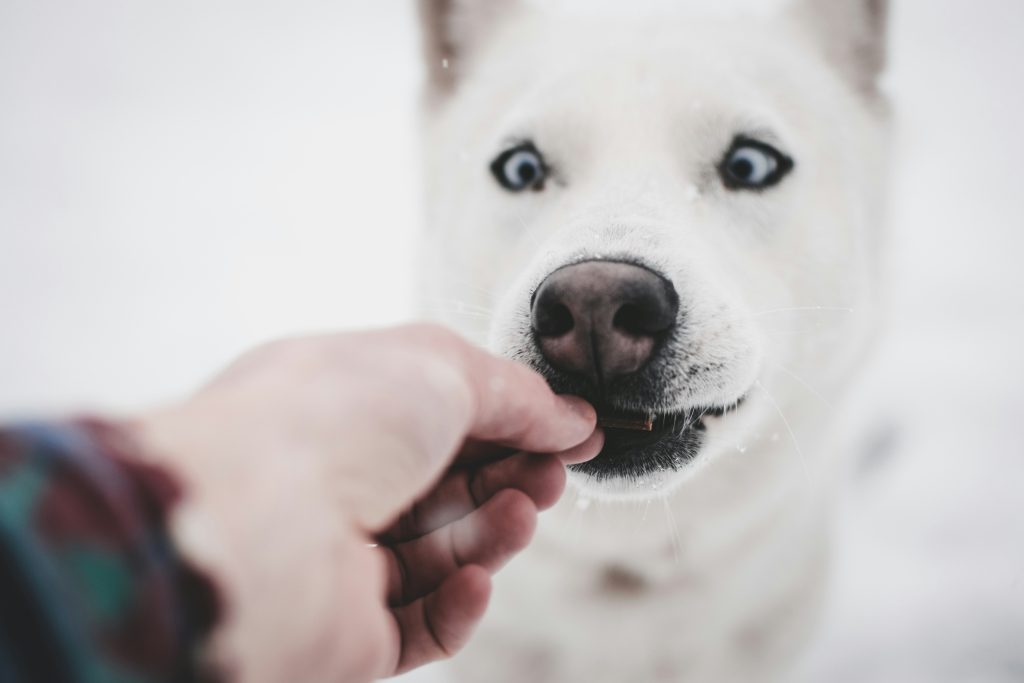Discover how hand feeding your dog can enhance socialization, build trust, and improve behavior for a happier, healthier pet.

Introduction to the Socialization Benefits of Hand Feeding
Hand feeding your dog offers numerous advantages that can significantly enhance the relationship between the dog and its owner. This practice not only fosters trust and bonding but also transforms mealtime into a valuable learning experience. By hand feeding, owners can create a nurturing environment where dogs feel safe and secure, leading to improved behavior and emotional well-being. For example, a dog that is hand fed may develop patience and self-control, as it learns to wait for food instead of rushing to a bowl.
Moreover, hand feeding can effectively address behavioral issues, promoting a more harmonious living arrangement. Dogs that experience anxiety during mealtime can benefit from this technique, as it creates positive associations with food and reduces the risk of food-related aggression. A dog that learns to associate the owner’s hands with food is less likely to exhibit aggressive tendencies, making mealtimes a peaceful experience.
 Understanding Hand Feeding
Understanding Hand Feeding
Hand feeding involves offering food directly from your hand instead of using a traditional bowl, allowing owners greater control over their dog’s eating habits. This method can be particularly beneficial for fast eaters, as it encourages slower consumption, leading to better digestion and a reduced likelihood of vomiting. For instance, a dog that tends to gulp its food can be taught to take smaller bites when fed by hand, promoting healthier eating habits.
Additionally, hand feeding can serve as an excellent training tool, especially for puppies. It allows them to develop a “soft mouth,” which reduces the risk of biting during treat-taking and fosters good manners. Engaging in hand feeding also provides mental stimulation, keeping dogs focused and attentive during mealtime while establishing the owner as a primary resource for rewards.
Socialization Enhancement
One of the most significant benefits of hand feeding is its role in enhancing a dog’s socialization skills. By encouraging positive interactions between dogs and humans, hand feeding helps reduce fear or anxiety around people. For example, a dog that has been hand fed regularly may approach new people with curiosity rather than wariness, facilitating smoother social interactions and improved behavior in various situations.
Furthermore, when dogs associate their owner’s hands with food, they learn to perceive humans as non-threatening sources of rewards. This shift in perception can extend beyond just human interactions; by creating a positive environment during feeding, dogs may also become more sociable with other dogs. Frequent hand feeding not only improves attention and responsiveness but also enhances a dog’s ability to engage in social situations effectively.

Benefits for Shy or Fearful Dogs
Hand feeding can be particularly beneficial for shy or fearful dogs, providing gradual exposure to new people and environments. This method allows nervous dogs to build confidence at their own pace, as they learn to trust their owners and view them as a source of comfort. For instance, a timid rescue dog may initially hesitate to approach its new owner, but through consistent hand feeding, it can gradually develop trust and confidence in social settings.
Involving other family members in the hand feeding process can further aid in socialization, as it helps the dog become more comfortable around different individuals. This technique can also serve as a calming activity for fearful dogs, creating a sense of security during mealtimes. By associating mealtime with positive experiences, shy dogs can improve their social skills and become more confident in their interactions with others.
Managing Resource Guarding
Hand feeding is an effective strategy for managing resource guarding behaviors in dogs. By teaching dogs that food comes from their owner, they develop a positive association with the presence of people during mealtime. For example, a dog that previously exhibited possessive behavior over its bowl may learn to remain calm when fed by hand, reducing the likelihood of aggressive tendencies.
This practice also encourages gentle mouth skills, as owners can reinforce calm behavior during feeding times. Moreover, hand feeding promotes sharing behaviors in multi-pet households, as dogs learn to expect food from their owners rather than competing with each other. By creating a positive environment around food, owners can help prevent food aggression and foster a more peaceful coexistence among pets.
 Incorporating Training During Feeding
Incorporating Training During Feeding
Integrating training commands into hand feeding sessions can reinforce obedience and recall skills in a relaxed setting. Mealtimes can double as training opportunities, allowing owners to teach practical behaviors and tricks while feeding. For instance, owners can use hand feeding to reinforce commands such as “sit” or “stay,” making the training process more engaging for the dog.
Using kibble or regular food as rewards during hand feeding can help maintain the dog’s interest in their meal while promoting good behavior. This method not only encourages positive actions but also provides a structured approach to teaching important commands. As a result, hand feeding becomes a versatile tool for both bonding and training, enhancing the overall relationship between the dog and its owner. Reach out to our dog trainers at Long Island Off leash K9 Training for advice on how to approach this if you are unsure.
 Precautions and Considerations
Precautions and Considerations
While hand feeding presents many benefits, it is essential to approach it with caution to avoid creating dependency on this method for eating. Owners should monitor their dog’s behavior during hand feeding to prevent possessiveness over food, which may lead to aggressive tendencies. It is crucial to ensure that hand feeding does not interfere with the dog’s ability to eat from a bowl, as practical feeding needs must still be met.
Balancing hand feeding with regular feeding routines is vital to maintain structure and predictability in a dog’s daily schedule. This balance helps prevent confusion and ensures that dogs remain adaptable to various feeding situations. By taking these precautions, owners can enjoy the benefits of hand feeding while ensuring a healthy and well-rounded feeding experience for their dogs.
Conclusion: The Transformative Impact of Hand Feeding on Dog Socialization
Hand feeding is a simple yet powerful method to enhance socialization, improve behavior, and strengthen the bond between dogs and their owners. This practice can significantly impact a dog’s overall well-being, making it a recommended technique for pet owners. By implementing hand feeding as part of a regular routine, owners can foster lasting positive changes in their dog’s social skills and behavior, ultimately leading to a more harmonious relationship.
